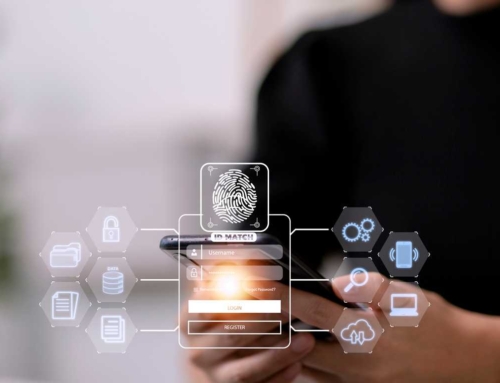Navigating Stakeholder Communication in a Ransomware Crisis
Understanding the Impact of Ransomware on Business Communication
Ransomware represents a formidable threat to the integrity of business operations, with its ability to cripple the essential communication channels that companies rely on to connect with stakeholders. In today’s digital landscape, the question is not if, but when an organization will confront this type of cyber emergency. As we at Alvaka underscore the centrality of resilience and readiness, it’s paramount to grasp the full scope of damage ransomware can inflict on internal and external dialogues. Our proactive stance is not merely about defense but about sustaining fluid communication during these crises, ensuring that trust and transparency remain unhindered.
The Immediate Steps to Take When a Ransomware Attack Occurs
Upon detection of a ransomware attack, the swift mobilization of IT management teams is critical. An effective response starts with isolating infected systems to contain the spread and mitigate damage. Simultaneously, our specialists engage in assessing the breach’s scope and securing backup data reservoirs. These initial steps are foundational, setting the stage for informed and strategic communications. At Alvaka, we recognize the value of early and decisive action, as it directly correlates to the preservation of stakeholder confidence and the minimization of operational downtime.
Ransomware Crisis Communication: Strategizing Stakeholder Engagement
Amidst a cyber emergency, deploying a considered approach to stakeholder communication is as vital as the technical response. Crafting a communication plan that addresses the needs and concerns of each stakeholder group is an exercise in precision and foresight. We prioritize clarity and responsibility, ensuring that our messaging is both accurate and empathetic. This preparation is not an afterthought but a core aspect of our crisis management protocol. It empowers us to deliver critical updates with confidence, balancing the urgencies of the situation with the expectations of those we serve.
Best Practices for Communicating with Stakeholders During a Ransomware Attack
In the face of a ransomware attack, it’s essential to communicate effectively. At Alvaka, we adhere to a set of best practices designed to maintain integrity and trust with our stakeholders. From the outset, we aim to establish a single source of truth, preventing misinformation and speculation from compromising the narrative. Regular, transparent communication is maintained throughout the resolution process. By ensuring our stakeholders are informed and reassured, we not only manage the crisis but also reinforce the robustness of our relationships built on reliability and expertise.
Identifying Your Key Stakeholders for Accurate Messaging
When facing a crisis such as a ransomware attack, communication plays a pivotal role not only in crisis management but also in maintaining the trust of your key stakeholders. At Alvaka, we recognize that different stakeholders require tailored messaging, which ensures clarity and provides reassurance during these critical times. Identifying your stakeholders and understanding their unique concerns and information needs is the initial step towards effective engagement.
Segmenting Stakeholders for Targeted Engagement
Our approach begins with segmenting stakeholders into distinct groups. Broadly, these groups can include your customers, employees, investors, and business partners. Although they’re all important to your organization, each segment demands a specific approach to communication, particularly under the strain of a ransomware attack.
In the context of best practices for communicating with stakeholders during a ransomware attack, here’s how we suggest you prioritize and address your key stakeholders:
- Customers: They are the cornerstone of our operations. Their immediate concern will likely be the safety and privacy of their personal data. We get ahead of the situation by promptly informing them of the breach and the steps we’re taking to safeguard their interests.
- Employees: As the inner wheel of our organization, employees must be apprised of the attack’s impact on operations. They should receive guidance on how to communicate the incident externally and understand their role in the recovery process.
- Investors: They have financial interests at stake and hence, require transparent updates on the situation. Our goal is to demonstrate control and a clear path to resolution, reinforcing their confidence in our crisis management capabilities.
- Business Partners: For supply chain integrity and business continuity, equipping partners with essential information is imperative. We collaborate closely with them to mitigate risks and resume normal operations as swiftly as possible.
Maintaining sector-specific channels of communication with each group ensures that they all receive the information that’s crucial for their decision-making process without creating unnecessary panic.
Incorporating Feedback Loops in Communication
As we implement best practices for communicating with stakeholders during a ransomware attack, establishing two-way communication is vital. Therefore, we create feedback loops that allow stakeholders to reach out with concerns and questions. This process helps us address specific issues and adapt our communication strategy accordingly. It not only places emphasis on fostering transparency but also underscores a commitment to partnering with stakeholders through recovery and beyond.
Our dedication to precise, thoughtful, and honest messaging reflects the core values of Alvaka. We stand firm in the notion that every crisis, when maneuvered with finesse and foresight, can be transformed into an opportunity to reinforce stakeholder trust and reaffirm our resilience.
Did you know that during a ransomware attack, immediate identification of key stakeholders is crucial for tailored crisis communication, ensuring accurate and timely messaging to maintain trust?
Communicating Effectively in the Face of Cyber Threats
When faced with the chaos of a ransomware attack, effective communication is not just about immediate responses but also about fostering a sustainable, transparent relationship with your stakeholders in the aftermath. At Alvaka, we believe in turning adverse situations into opportunities to strengthen trust and demonstrate resilience. By following the best practices for communicating with stakeholders during a ransomware attack, we have outlined strategies that enable businesses to manage their messaging in a controlled and considerate manner.
Post-incident analysis and communication are as crucial as the initial response. After containing and beginning the process of ransomware recovery, it’s imperative to carry out a thorough investigation to understand the attack’s vector, the data affected, and to improve defenses accordingly. Sharing this information with stakeholders not only shows transparency but also helps them understand the tangible steps being taken for both recovery and future prevention.
Strengthening Trust Through Transparency and Updates
In the wake of a ransomware incident, it’s understandable that stakeholders may feel anxious about the security of their data and the future of their collaboration with your business. As part of our commitment to excellence, we recommend maintaining open channels of communication. This allows for regular updates, which will enable stakeholders to stay informed on the progress of system restorations and security enhancements. Transparency fosters trust, and trust is the cornerstone of recovery and ongoing partnership.
Evaluating the effectiveness of your communication during these times is also vital. As we navigate the complexities of IT management, we continuously learn and improve from each challenge. Adopting an iterative approach, where feedback from stakeholders is sought and incorporated into improving communication plans, can significantly enhance your business’s resilience against similar threats.
Cultivating a Culture of Communication Excellence
Ultimately, the true test of a business’s preparedness is not just in its technical defenses but also in the robustness of its communication strategy. At Alvaka, we reinforce the concept that every team member plays a role in effective communication, making it part of our organizational culture. By embedding the best practices for communicating with stakeholders during a ransomware attack into everyday operations, we ensure that all members are equipped to act cohesively, providing accurate and timely updates to stakeholders at critical moments.
Moving forward from a ransomware attack, let the lessons learned reshape your communication protocols and business continuity plans. Consider conducting regular training for staff on ransomware awareness and crisis communication. Not only will this bolster your team’s ability to respond adeptly, but it will also demonstrate to stakeholders that your business is actively improving its stance against cyber threats and prioritizing their interests.
By making communication a quintessential element of our business process and combining it with cutting-edge ransomware recovery solutions, we stand firm against cyber threats while ensuring our stakeholders remain confident in our abilities. Trust Alvaka to be your ally in navigating the complexities of cyber threats and stakeholder communication—your peace of mind is our utmost priority. For comprehensive expertise in crisis communication and ransomware defenses, remember that adopting the best practices for communicating with stakeholders during a ransomware attack is essential to safeguarding your business continuity.
How can you communicate with stakeholders during a cyber attack?
The Importance of Stakeholder Communication in Cybersecurity Excellence
FAQ
What is ransomware and how does it impact business communication? ▼
Ransomware is a type of malicious software that encrypts a victim’s files, rendering them inaccessible until a ransom is paid. For businesses, it can severely disrupt communication with clients, employees, and other stakeholders by incapacitating crucial communication tools and databases. Ensuring we have strong security measures in place is vital to prevent these interruptions.
What immediate steps should our IT management team take following a ransomware attack? ▼
Immediately after detecting a ransomware attack, our IT management team should isolate the affected systems to prevent the malware from spreading. Next, they should secure backups and begin an assessment of the damage. Simultaneously, contacting law enforcement and informing stakeholders of the breach is crucial to maintaining transparency and trust.
Why is a strategic communication plan important during a ransomware crisis? ▼
Having a strategic communication plan ensures that we effectively manage the flow of information during a ransomware crisis. Consequently, it helps maintain business continuity, uphold stakeholder trust, and allows for a coordinated response that can mitigate damage to our reputation. Importantly, the plan should be integral to our overall crisis management strategy.
How do we identify key stakeholders for communication during a ransomware attack? ▼
To identify key stakeholders, we must evaluate who is impacted by our business and who influences our operations. This includes internal stakeholders like employees and external ones such as customers, partners, and investors. Once identified, we can tailor our communication to address their specific concerns and information needs during a crisis.
What are best practices for ransomware preparedness in terms of communication? ▼
Best practices include regularly updating and testing our incident response and communication plans, conducting cybersecurity awareness training, and maintaining clear, preemptive communication channels with our stakeholders. Furthermore, having an established protocol for different communication scenarios ensures we’re not caught off guard.
Should we negotiate with ransomware attackers or pay the ransom? ▼
Our approach is to avoid paying the ransom, as this doesn’t guarantee the return of our data and can encourage further criminal activity. Instead, we collaborate with law enforcement and rely on our robust disaster recovery and response plans. Prompt and transparent communication to stakeholders about this stance is essential during the crisis.
How do we communicate with customers after a ransomware attack? ▼
After a ransomware attack, we communicate with customers promptly, providing them with accurate information about the situation and how it may affect them. We also offer clear guidance on protective measures they should take and make ourselves readily available to answer any questions, showing that we are proactive and supportive during the incident.
What role does employee awareness play in ransomware crisis communication? ▼
Employee awareness is crucial; informed employees can serve as the first line of defense against an attack. Moreover, ensuring they are educated on the communication protocols helps maintain consistent and accurate messaging to all our stakeholders, which is key during a crisis.
How can we maintain transparency with investors during and after a ransomware attack? ▼
We maintain transparency with investors by providing regular updates, being upfront about the impact of the attack, and detailing our response and recovery measures. This approach fosters investors’ confidence in our ability to manage the crisis and protects our business relationships and market reputation.
What is the role of public relations in managing communication during a ransomware attack? ▼
Public relations play an integral part in managing external communication during a ransomware attack. It involves crafting clear, concise messages that inform the public and stakeholders about the situation and the steps we’re taking, all while managing our organization’s reputation and working to alleviate concerns that may arise.








 You want to enter in a fully burdened labor rate for this field. What that means is that you want to take the base hourly rate, plus 25-30% for employer payroll taxes, benefits, vacation/holiday time, etc.
You want to enter in a fully burdened labor rate for this field. What that means is that you want to take the base hourly rate, plus 25-30% for employer payroll taxes, benefits, vacation/holiday time, etc.
 Smoke testing is a type of software testing performed by Alvaka after a software patching sequence to ensure that the system is working correctly and to identify any misconfigurations or conflicts within the patched system.
Smoke testing is a type of software testing performed by Alvaka after a software patching sequence to ensure that the system is working correctly and to identify any misconfigurations or conflicts within the patched system. This is a basic cost calculator for you to compute your typical monthly cost for patching your servers, PCs, laptops, tablets and associated application software. It also forms the basis for you to begin calculating your Return on Investment for software patching, or for comparison with alternatives to the manual process of patching operating systems and application software—such as Patch Management as a Service, also known as Vulnerability Management as a Service.
This is a basic cost calculator for you to compute your typical monthly cost for patching your servers, PCs, laptops, tablets and associated application software. It also forms the basis for you to begin calculating your Return on Investment for software patching, or for comparison with alternatives to the manual process of patching operating systems and application software—such as Patch Management as a Service, also known as Vulnerability Management as a Service. Smoke testing is a term used to describe the testing process for servers after patches are applied.
Smoke testing is a term used to describe the testing process for servers after patches are applied.